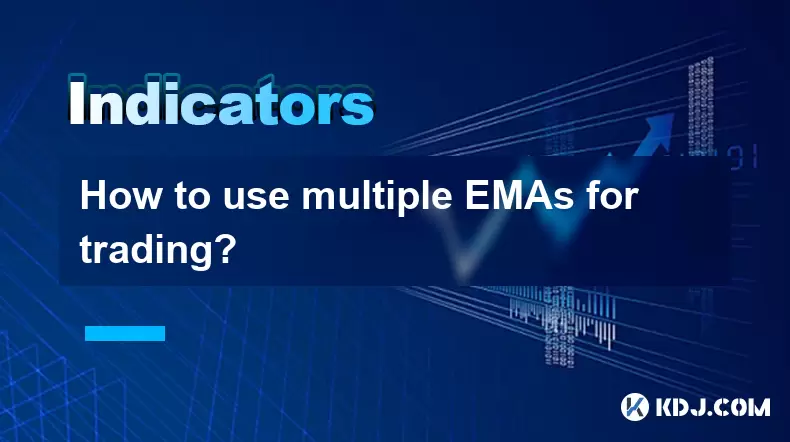-
 Bitcoin
Bitcoin $118,209.3536
1.16% -
 Ethereum
Ethereum $3,151.7546
5.98% -
 XRP
XRP $2.9277
2.35% -
 Tether USDt
Tether USDt $1.0000
0.00% -
 BNB
BNB $689.7099
1.26% -
 Solana
Solana $163.4270
1.91% -
 USDC
USDC $1.0000
0.02% -
 Dogecoin
Dogecoin $0.1983
3.74% -
 TRON
TRON $0.3008
0.51% -
 Cardano
Cardano $0.7435
2.86% -
 Hyperliquid
Hyperliquid $47.6547
-0.48% -
 Stellar
Stellar $0.4625
2.79% -
 Sui
Sui $3.9921
2.71% -
 Chainlink
Chainlink $16.0608
4.23% -
 Hedera
Hedera $0.2348
1.56% -
 Bitcoin Cash
Bitcoin Cash $496.6985
1.25% -
 Avalanche
Avalanche $21.9038
5.41% -
 UNUS SED LEO
UNUS SED LEO $8.8356
-1.88% -
 Shiba Inu
Shiba Inu $0.0...01364
5.31% -
 Toncoin
Toncoin $3.1102
4.35% -
 Litecoin
Litecoin $95.9756
3.59% -
 Polkadot
Polkadot $4.0925
5.78% -
 Monero
Monero $333.7622
-1.44% -
 Uniswap
Uniswap $9.1968
2.25% -
 Bitget Token
Bitget Token $4.6378
6.23% -
 Pepe
Pepe $0.0...01282
6.77% -
 Dai
Dai $1.0002
0.03% -
 Ethena USDe
Ethena USDe $1.0005
0.00% -
 Aave
Aave $329.9143
4.49% -
 Bittensor
Bittensor $441.4995
6.89%
How to use multiple EMAs for trading?
The Exponential Moving Average (EMA) highlights recent price trends, with shorter periods like the 9 EMA capturing quick shifts and longer ones like the 55 EMA signaling broader trends.
Jul 11, 2025 at 06:56 am

Understanding the Exponential Moving Average (EMA)
The Exponential Moving Average (EMA) is a type of moving average that places greater weight and significance on the most recent data points. Unlike the Simple Moving Average (SMA), which treats all data points equally, EMA reacts more significantly to recent price changes, making it a preferred indicator for many traders.
Using multiple EMAs allows traders to analyze short-term, medium-term, and long-term trends simultaneously. This multi-layered approach helps in identifying potential trend reversals, confirming trade signals, and filtering out false ones.
Important: The key advantage of using multiple EMAs lies in their ability to provide layered insights into market momentum and trend strength.
Selecting the Right EMA Periods
Choosing appropriate EMA periods depends on your trading strategy and time horizon. A commonly used combination includes the 9-period EMA, 21-period EMA, and 55-period EMA. These values are not arbitrary—they reflect different layers of market behavior:
- Short-term traders often rely on 9 or 12-period EMAs.
- Intermediate traders may use 21 or 26-period EMAs.
- Long-term investors monitor 50 or 200-period EMAs.
Each EMA serves as a dynamic support or resistance level. When prices cross above or below these levels, they can signal shifts in sentiment.
- 9 EMA – Highly sensitive to price action, useful for spotting early trend changes.
- 21 EMA – Offers a balance between sensitivity and reliability.
- 55 EMA – Acts as a strong filter for long-term trend validation.
Setting Up Multiple EMAs on Your Trading Platform
Most modern trading platforms like TradingView, MetaTrader, or Binance’s native tools allow you to add multiple EMAs with ease. Here's how to do it step by step:
- Open your preferred charting platform and load a cryptocurrency pair (e.g., BTC/USDT).
- Navigate to the indicators section and search for “EMA” or “Exponential Moving Average.”
- Add the first EMA with a period of 9. Customize its color (e.g., green) for clarity.
- Add another EMA with a period of 21 and choose a contrasting color (e.g., yellow).
- Finally, add a 55-period EMA and assign a third color (e.g., red).
Once applied, these EMAs will overlay on the price chart, forming a visual framework for decision-making.
Tip: Ensure that each EMA line is clearly distinguishable by color and thickness to avoid confusion during live trading.
Interpreting Crossovers Between EMAs
One of the most popular strategies involving multiple EMAs is the crossover method. It involves observing when shorter EMAs cross above or below longer EMAs to identify potential buy or sell signals.
Here are some common crossover setups:
- Golden Cross: When the 9 EMA crosses above the 21 EMA, followed by both crossing above the 55 EMA, it signals a strong bullish trend.
- Death Cross: When the 9 EMA crosses below the 21 EMA, and both fall below the 55 EMA, it indicates a bearish phase.
- Early Warning Signals: A divergence where the 9 EMA starts to turn while the 21 and 55 remain flat can warn of an impending reversal.
These crossovers work best when confirmed with volume spikes or other indicators like RSI or MACD.
Combining Price Action with EMA Layers
Price action analysis becomes more powerful when combined with multiple EMAs. Traders can observe how price behaves around these dynamic lines:
- If the price consistently stays above the 55 EMA, the overall trend is considered bullish.
- When the price pulls back to touch the 21 EMA and bounces off it, this could be a buying opportunity in an uptrend.
- In a downtrend, if the price rallies to test the 21 EMA and gets rejected, it confirms the strength of the bearish move.
Additionally, candlestick patterns such as pin bars, engulfing candles, or inside bars near EMA levels can serve as high-probability entry points.
Note: Always wait for confirmation—such as a close beyond the EMA or a follow-through candle—before entering a trade based solely on price interaction with EMAs.
Frequently Asked Questions (FAQs)
Q: Can I use EMAs on any cryptocurrency chart?
Yes, EMAs can be applied to any crypto chart including Bitcoin, Ethereum, altcoins, and stablecoin pairs. Their effectiveness may vary depending on the asset's volatility and liquidity.
Q: How often should I adjust my EMA settings?
EMA settings should remain consistent unless there's a significant change in market structure or your trading strategy evolves. Frequent adjustments can lead to overfitting and poor performance.
Q: Are multiple EMAs reliable in sideways markets?
In ranging or sideways markets, EMAs tend to produce false signals due to frequent crossovers without sustained trends. In such cases, combining EMAs with oscillators like RSI or Bollinger Bands can improve accuracy.
Q: Should I use multiple EMAs alone or with other indicators?
While EMAs are powerful, relying solely on them can increase risk. It's advisable to combine them with volume indicators, trendlines, or oscillators for better confirmation and risk management.
Disclaimer:info@kdj.com
The information provided is not trading advice. kdj.com does not assume any responsibility for any investments made based on the information provided in this article. Cryptocurrencies are highly volatile and it is highly recommended that you invest with caution after thorough research!
If you believe that the content used on this website infringes your copyright, please contact us immediately (info@kdj.com) and we will delete it promptly.
- Crypto ROI Revolution: Is BFX the Next Big Thing?
- 2025-07-16 21:30:13
- Dogecoin, HBAR, and Partnerships: A Tale of Memes vs. Utility
- 2025-07-16 21:30:13
- Cha-Ching! That £2 Coin Could Be Worth a Mint!
- 2025-07-16 22:10:12
- Meme Coin Mania Meets Crypto Payroll & Burger Bites: A New York Minute on the Latest Trends
- 2025-07-16 22:10:13
- China Gold Market: Investment and Focus in 2025
- 2025-07-16 22:15:13
- FxWirePro: Token Unlock Tsunami – Navigating the ARBUSD Waters
- 2025-07-16 22:15:13
Related knowledge

Advanced RSI strategies for crypto
Jul 13,2025 at 11:01am
Understanding the Basics of RSI in Cryptocurrency TradingThe Relative Strength Index (RSI) is a momentum oscillator used to measure the speed and chan...

Crypto RSI for day trading
Jul 12,2025 at 11:14am
Understanding RSI in the Context of Cryptocurrency TradingThe Relative Strength Index (RSI) is a momentum oscillator used to measure the speed and cha...

Crypto RSI for scalping
Jul 12,2025 at 11:00pm
Understanding RSI in the Context of Crypto TradingThe Relative Strength Index (RSI) is a momentum oscillator widely used by traders to measure the spe...

What does an RSI of 30 mean in crypto
Jul 15,2025 at 07:07pm
Understanding RSI in Cryptocurrency TradingRelative Strength Index (RSI) is a momentum oscillator widely used in cryptocurrency trading to measure the...

What does an RSI of 70 mean in crypto
Jul 13,2025 at 06:07pm
Understanding the RSI Indicator in Cryptocurrency TradingThe Relative Strength Index (RSI) is a widely used technical analysis tool that helps traders...

Does RSI work in a bear market for crypto
Jul 16,2025 at 01:36pm
Understanding RSI in Cryptocurrency TradingThe Relative Strength Index (RSI) is a momentum oscillator used by traders to measure the speed and change ...

Advanced RSI strategies for crypto
Jul 13,2025 at 11:01am
Understanding the Basics of RSI in Cryptocurrency TradingThe Relative Strength Index (RSI) is a momentum oscillator used to measure the speed and chan...

Crypto RSI for day trading
Jul 12,2025 at 11:14am
Understanding RSI in the Context of Cryptocurrency TradingThe Relative Strength Index (RSI) is a momentum oscillator used to measure the speed and cha...

Crypto RSI for scalping
Jul 12,2025 at 11:00pm
Understanding RSI in the Context of Crypto TradingThe Relative Strength Index (RSI) is a momentum oscillator widely used by traders to measure the spe...

What does an RSI of 30 mean in crypto
Jul 15,2025 at 07:07pm
Understanding RSI in Cryptocurrency TradingRelative Strength Index (RSI) is a momentum oscillator widely used in cryptocurrency trading to measure the...

What does an RSI of 70 mean in crypto
Jul 13,2025 at 06:07pm
Understanding the RSI Indicator in Cryptocurrency TradingThe Relative Strength Index (RSI) is a widely used technical analysis tool that helps traders...

Does RSI work in a bear market for crypto
Jul 16,2025 at 01:36pm
Understanding RSI in Cryptocurrency TradingThe Relative Strength Index (RSI) is a momentum oscillator used by traders to measure the speed and change ...
See all articles

























































































